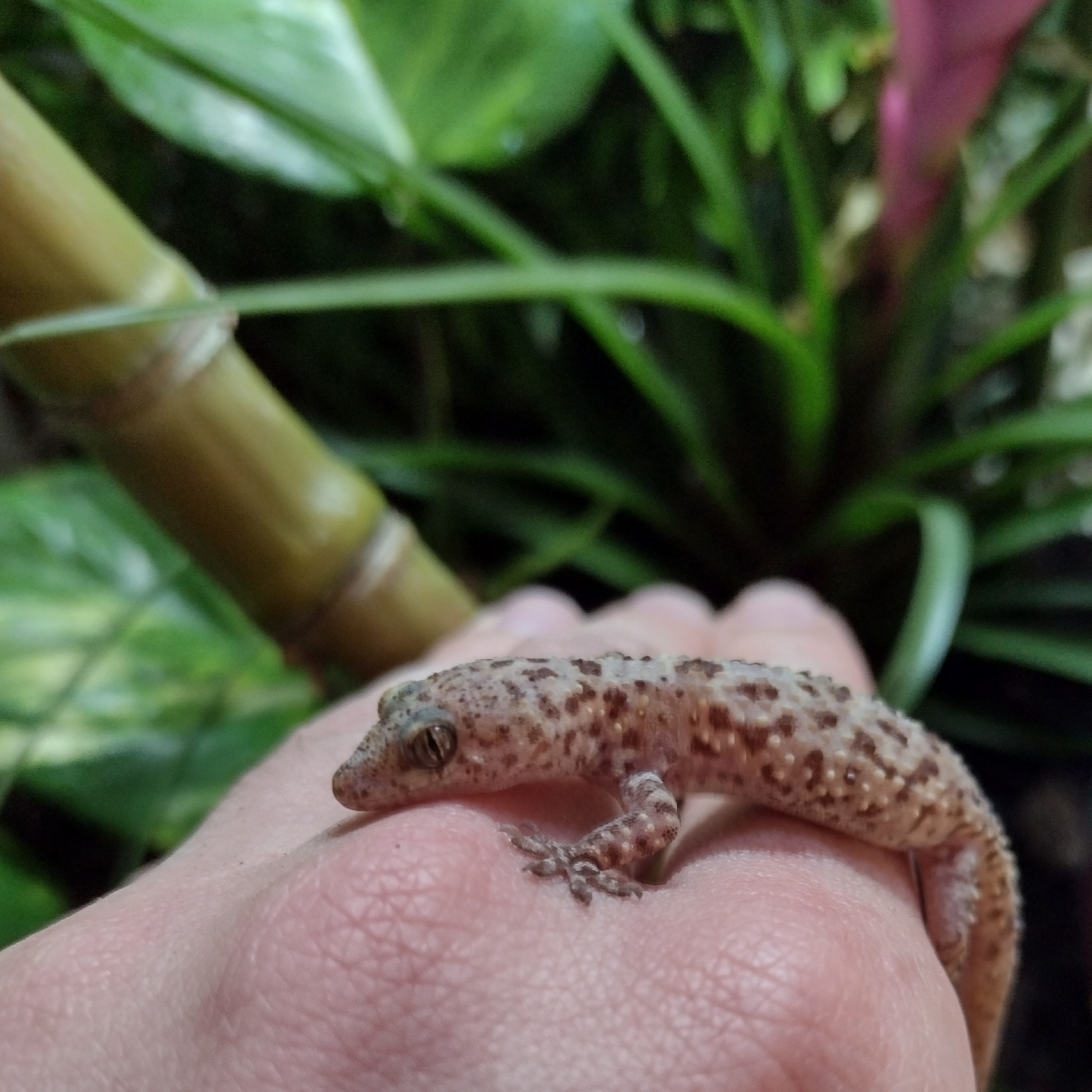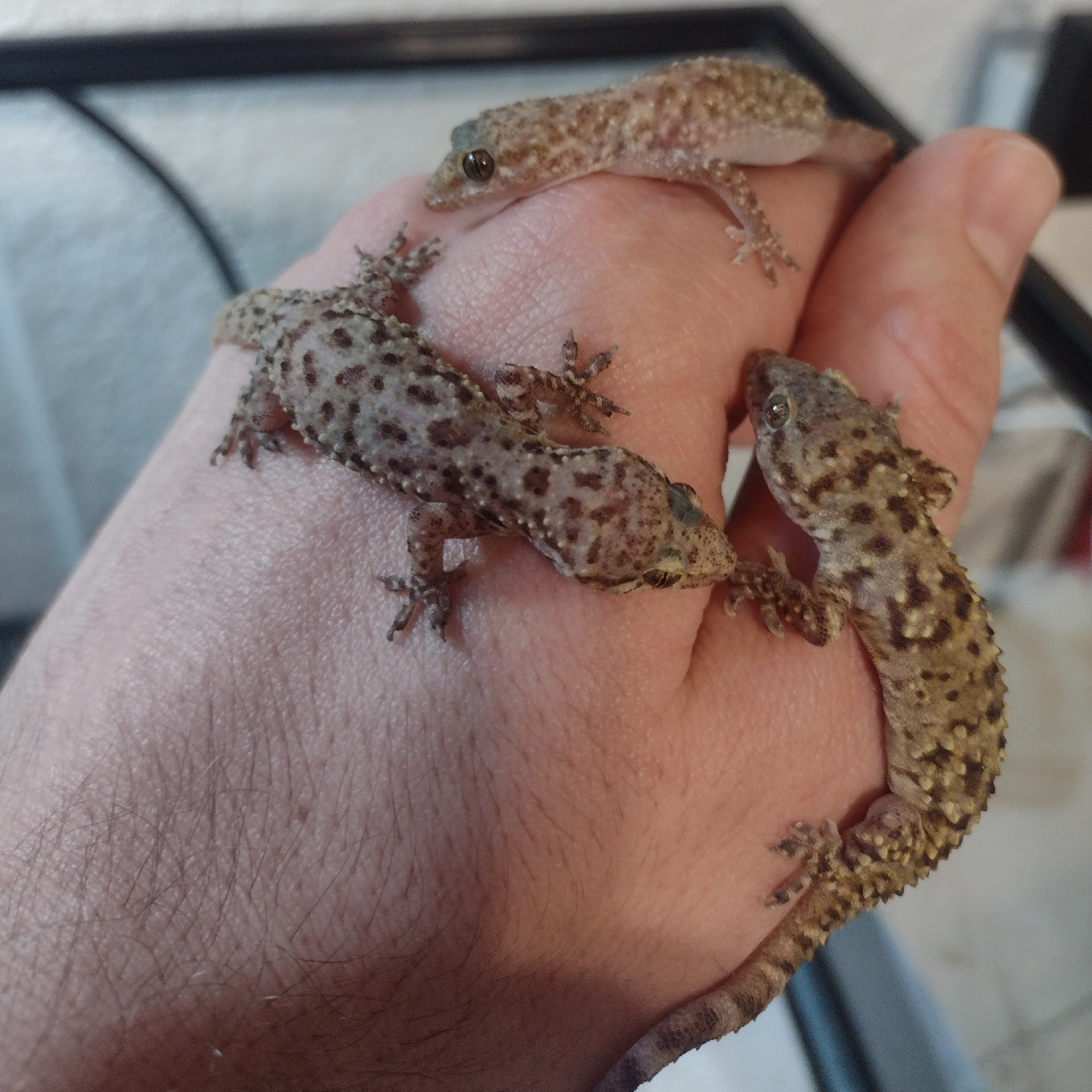The Call of the Mediterranean House Gecko
 The mediterranean house gecko (Hemidactylus turcicus) is a common sight; so much so that I
had always assumed they were native to Texas. This was revealed to be false the instant I used iNaturalist’s
Seek to identify one on my front porch (the name gave it away). For
whatever reason, this species of house gecko in particular has managed to spread from its native range to almost every
continent. Its ecological impact is unclear, but seems to be minimal, and they often prefer living alongside human
habitations. As I read about the species, I learned that – like most geckos but unlike most other lizards – they are
capable of vocalizing. Frustratingly, there is not much in the way of gecko audio content available on the internet, so
I had to take matters into my own hands.
The mediterranean house gecko (Hemidactylus turcicus) is a common sight; so much so that I
had always assumed they were native to Texas. This was revealed to be false the instant I used iNaturalist’s
Seek to identify one on my front porch (the name gave it away). For
whatever reason, this species of house gecko in particular has managed to spread from its native range to almost every
continent. Its ecological impact is unclear, but seems to be minimal, and they often prefer living alongside human
habitations. As I read about the species, I learned that – like most geckos but unlike most other lizards – they are
capable of vocalizing. Frustratingly, there is not much in the way of gecko audio content available on the internet, so
I had to take matters into my own hands.
While doing some yard work, I found the daytime refuge of several geckos under a large piece of wood that had to be moved. Taking the opportunity, I cleaned up an old aquarium and carefully transferred everyone to their new temporary home before continuing with my fairly destructive outdoor chores. Along with a few plants and dark hiding places, I added an old Blue Snowball microphone attached to a Raspberry Pi for constant surveillance.

The first night, I ran into an issue that I should have foreseen - .wav files have a maximum file size of 4 GiB. As I was recording at ridiculous bit rates, I wound up with only about 2 hours of audio. The next night, I used a one-line script that started a new recording every hour:
1$ sox -t alsa default -c 1 -r 44100 -b 16 part.wav trim 0 1:00:00 : newfile : restart & disown
The new problem was sifting through hours of audio for a sound that I had never heard before. The waveform is not
particularly illuminating. There are distinct peaks, but several are from barking dogs, passing cars, and so on.
 The best way to find interesting sounds in a whole mess of audio data is to look at the spectrogram. In particular, the
gecko calls are marked by a series of rapid clicks preceding a series of broadband chirps:
The best way to find interesting sounds in a whole mess of audio data is to look at the spectrogram. In particular, the
gecko calls are marked by a series of rapid clicks preceding a series of broadband chirps:
 After looking at spectrograms for less than a minute, I was able to spot this pattern. It is completely distinct from
anything else on the recording.
After looking at spectrograms for less than a minute, I was able to spot this pattern. It is completely distinct from
anything else on the recording.
Once I found a few instances of geckospeak, I took the clearest sample and performed some light noise reduction. Since there were many geckos in the enclosure, I am not sure if we are hearing a single gecko, or if one gecko begins clicking and another responds by chirping. Regardless, I am delighted with the final product 🦎✨
After their performance, all the geckos were given a generous stipend of several juicy crickets each, and summarily released to the front porch to join the rest of their family.